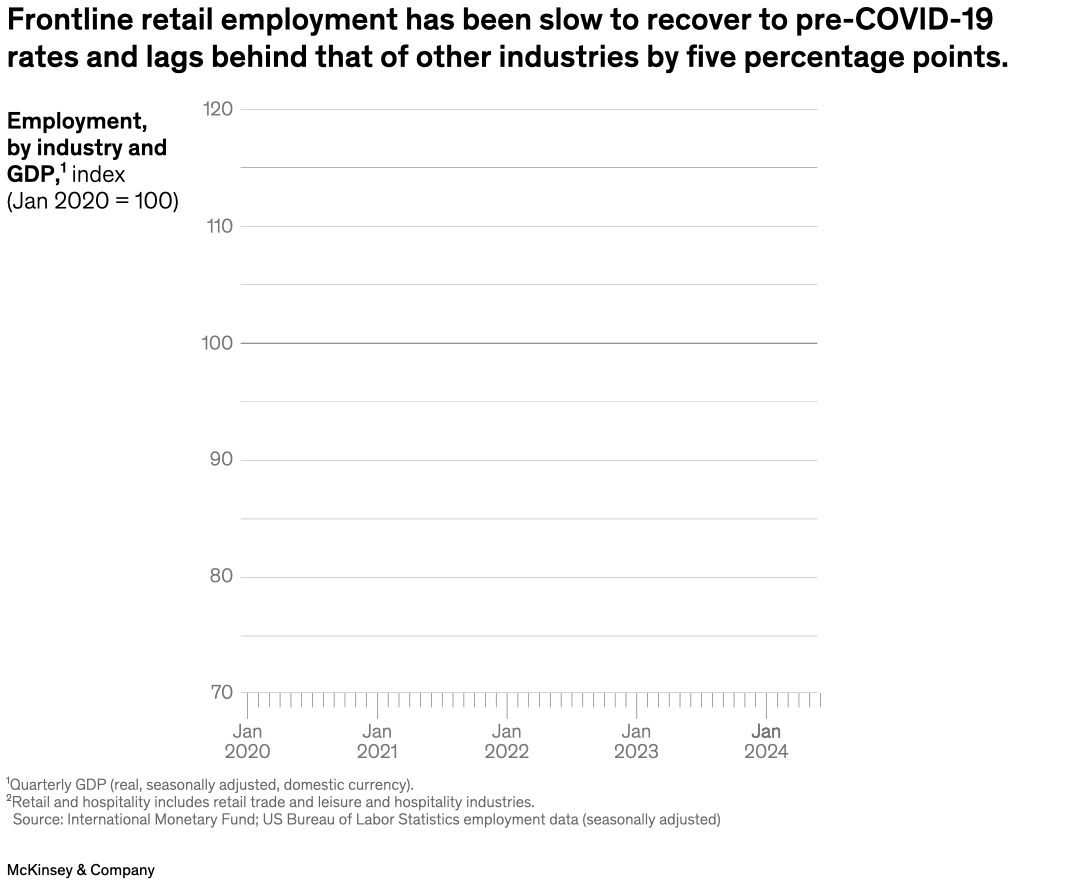The US retail and hospitality workforce is still dealing with the aftershocks of the COVID-19 pandemic. For example, employment in all other industries recovered to January 2020 levels by November 2021. However, it wasn’t until September 2023 when the retail and hospitality labor force came back to its prepandemic status, say partner David Fuller and coauthors. And employment is still lagging behind other industries. Retailers’ employee value propositions are not meeting workers’ needs, which is likely contributing to the lack of workforce growth in the sector.

Image description:
A line chart shows the recovery of employment in the retail and hospitality sector, compared with that of other industries and GDP, following the pandemic. Jan 2020 is set as the baseline at 100. Retail and hospitality was the hardest hit by the pandemic, falling to an index of <75 after Jan 2020. All other industries fell to a slightly higher index of ~92. GDP fell to ~93. Afterward, retail and hospitality began to recover more quickly than GDP, which recovered more quickly than all other industries. By Aug 2023, retail and hospitality had reached 100. GDP had reached ~110, and all other industries had reached ~105. Despite this, retail and hospitality still lags behind all other industries by 5 percentage points. The chart also shows that all other industries surpassed their prepandemic employment rate by Jan 2022, while retail and hospitality took until mid-2023 to do so.
Source: International Monetary Fund; US Bureau of Labor Statistics employment data (seasonally adjusted).
End of image description.
To read the article, see “How retailers can build and retain a strong frontline workforce in 2024,” July 17, 2024.